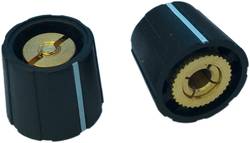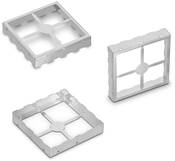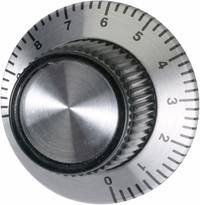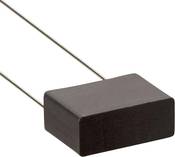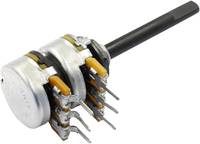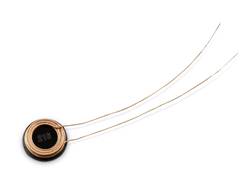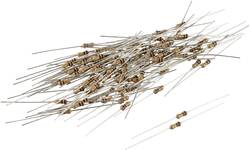All products
Guide
This text is machine translated.
Worth knowing about passive components
At Conrad you order online passive components (in short passives) for your projects. We carry various brands, from well-known suppliers such as Panasonic or Bourns to advantageous parts from Tru Components. Our wide and deep range of passive components offers you a sufficient choice of the parts you require. Thanks to our large stocks and strict agreements with manufacturers, we deliver your order quickly at the best price. Regardless of the size of your order.
They do not regulate, they do not control, they work with constant values in electronic circuits - passive components. As indispensable "helpers" in electrical engineering and electronics, they ensure the precisely limited current, the clean voltage smoothing, the correct supply voltage or the galvanic isolation of circuits.
Learn more about passive components in our guide.
-
What are passive components?
-
What is the difference to active components?
-
Passive components: What are the types?
-
Our practical tip
-
What to consider when buying?
-
Our most popular guides from the passive components section
What are passive components?
Passive components are components for circuits in electronics, which are equipped with fixed, unchangeable physical values. These include resistors of all types, also potentiometers and trimmers, capacitors, coils and oscillating crystals. The values of these components do not change during operation due to applied voltages and flowing currents, only the ambient temperature has a more or less strong influence on the respective value of the component. In some cases, this effect is also exploited for technical solutions.
Passive components are offered in different qualities, mostly expressed by a percentage variation from the nominal value. Electronic components with lower tolerances are usually more expensive.
What is the difference to active components?
In contrast, active components can use a control voltage to assume various states for passing or blocking electric current. These include, for example, transistors, diodes or thyristors, but also such electromechanical components as relays, because they assume a defined switching state with the aid of a control voltage.
Passive components: What are the types?
HF, EMC components
The field of EMC - electromagnetic compatibility - deals with the suppression of electromagnetic interference that may emanate from an electrical device and, at the same time, with the protection against interference of a device by other devices. For this purpose, circuit combinations of passive components are used, mostly capacitors, coils and special ferrite cores as well as shielding plates.
Knobs
Control knobs are mechanical devices with which adjustable passive components can be operated more easily. Knobs are screwed onto the rotary axes of potentiometers or variable capacitors, or are mounted on sliding potentiometers as sliding knobs. The knob surfaces are usually designed to facilitate a secure grip by the operator. Pointer markings can be used to set defined values on the components operated. Various scales and colored caps as well as reducers are available as potentiometer accessories, which simplifies the marking of the operating elements.
Capacitors
Capacitors consist of two spatially separated electrically conductive elements. The separation is realized mechanically by the dielectric. In the DC circuit, capacitors have the ability to store electrical energy, for example as a component of the electronics for flashlight devices. In the AC circuit, they act like a resistor whose value is frequency-dependent, for example in microphone inputs on amplifiers.
Potentiometer
A potentiometer can be used to set the value of a resistor. The setting range spans the maximum value of the potentiometer up to the value zero. The change of the resistance value per travelled rotation or shift value can be linear or logarithmic. The classic example is volume control. Trim potentiometers are also adjustable resistors, but are not designed for a constant change of their value.
Coils, chokes
Both passive components are basically constructed in the same way: as an arrangement of turns of insulated wire. These windings can be applied to a core with electrical properties or wound without a core. When a current flows through them, a magnetic field is created that is used for various applications. In the case of coils and chokes with a magnetizable core, a higher inductance is achieved. Chokes are used in combination with capacitors and other components to smooth AC voltage. The combination of coils creates transformers that are built in size and core material for different power and frequency ranges. Large transformation ratios are used in automotive ignition coils, and highly efficient inductors are used in wireless charging, for example.
Resistors
A resistor consists of the resistor layer from which the connections are derived. The resistor layer is applied to a carrier and covered with an outer protective layer. Resistors are used to divide and adjust currents and voltages. Carbon-based or metal-based materials are used for the resistive layer, depending on the application and performance requirements. The construction designs range from large screwable power resistors to SMD resistors for industrial processing. Special designs of resistors include varistors as voltage-dependent resistors, PTC thermistors and HTC thermistors with highly pronounced temperature coefficients, and surge arresters as special components for equipment protection.
Our practical tip
Passive components are quite robust, but there are limits to this as well. When installing them, make sure that these components are placed without mechanical stresses. If necessary, use existing fastening elements, especially for larger components.
When soldering and desoldering, do not exceed the maximum permissible soldering temperature at the terminals of the passive components and at the carrier of these components.
What should be considered when buying?
Often passive components with larger tolerances are sufficient for the construction of a circuit. In case of doubt, measuring offers security. This is a must for high-end hi-fi systems, for example. When selecting inductors, you should keep in mind that as passive components, they have a significant influence on the overall weight of your device. Avoid oversizing these components. To determine the resistance value based on the color coding on the component, the Vitrometer from Conrad Components will help you. This "resistance clock" is available for different resistor series.
Our most popular guides from the passive components section
| Guide | Area | |
|---|---|---|
| 1 | Film capacitors | Capacitors |
| 2 | SMD resistors | Resistors |
| 3 | Electrolytic capacitors | Capacitors |
| 4 | Rotary potentiometer | Potentiometer |
| 5 | Resistors | Resistors |
| 6 | Ferrite cores | HF, EMC components |
| 7 | Inductors, coils, chokes | Coils & chokes |
| 8 | Suppression filters | HF, EMC components |
| 9 | Interference suppression capacitors | Capacitors |
| 10 | Motor capacitors | Capacitors |
| 11 | NTC resistors, thermistors | Resistors |
| 12 | Capacitors | Capacitors |
| 13 | Power resistors | Resistors |
| 14 | Metal film resistors | Resistors |
| 15 | Potentiometers | Potentiometer |
